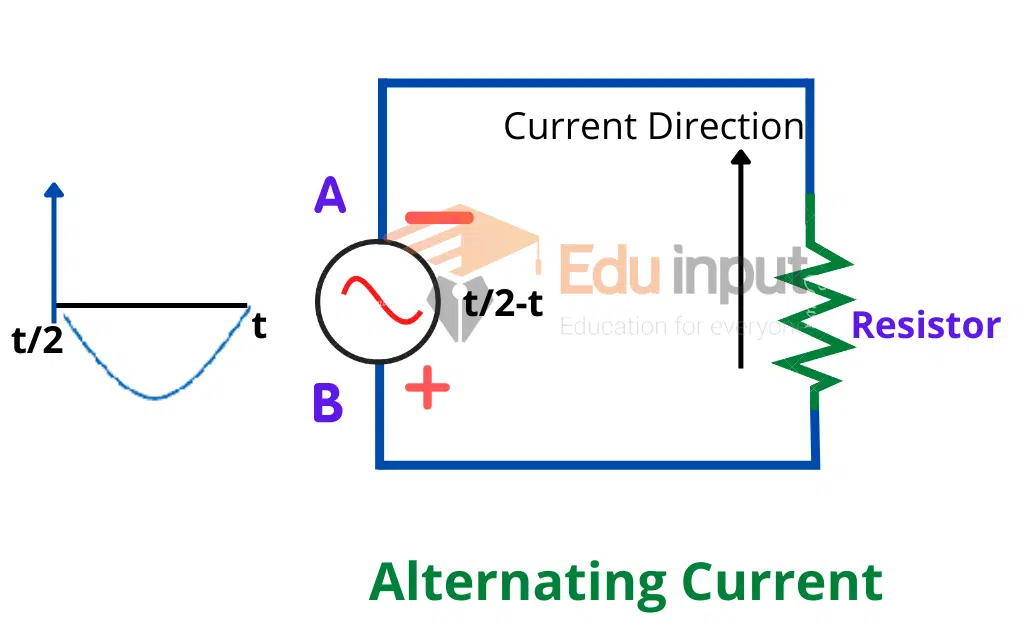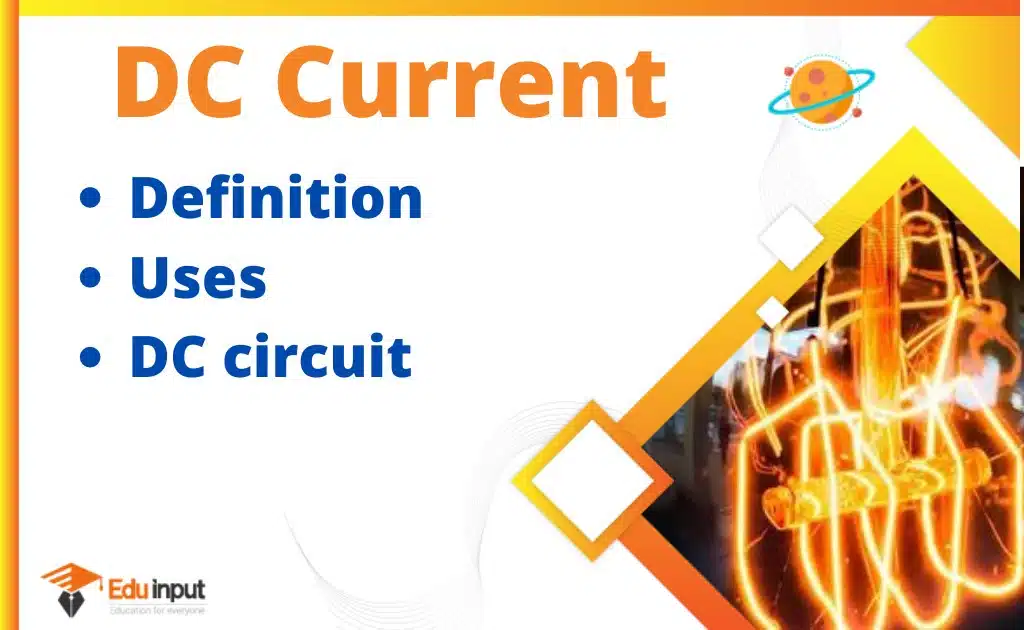Alternating Current | Phase and Source of Alternating Current
Alternating current is produced by an A.C. generator. Now a day’s most of the electric current is produced by Alternating current generators using huge steam turbines or water power.
The main reason for the worldwide use of Alternating current is that it can be transmitted to long distances easily and at a very low rate.
Alternating Current
The current which reverses its direction several times per second is called alternating Current.
A current that is produced by a voltage source whose polarity keeps on reversing with time is called an alternating current (A.C).
Consider terminal A of the source is positive concerning terminal B. This polarity remains the same during the time interval 0 to T/2.

At time t=T/2 the terminals change their polarity. Now A is negative concerning B. This state continues during the time interval T/2 to T.

After this, terminal A again becomes positive concerning B and the next cycle starts. Due to this change of polarity, the flow of current in the circuit also changes its direction.
During the time 0-T/2, it flows in one direction from positive to negative, and during the interval T/2-T in opposite direction from negative to positive.
The time period of Alternating current
The time interval T during which voltage source changes its polarity once is known as Time Period T of the A.C Current or voltage.
Frequency of A.C
The number of cycles completed in one second is called frequency.
The time period and frequency are related as f=1/t.
Source of Alternating Current
The most common source of A.C. voltage is an A.C. generator. The output voltage of the A.C. generator at any instant is given by:
V=(VoSin2π/T) t
Where T is the time period of the rotation of the coil and is equal to the period of alternating current Vo Peak value of voltage.
ω= 2π/T =2πf
(2π/T) t= ωt= θ
This is the angle through which a coil rotates in time t and ω is the angular frequency of rotation of the coil.
From the equation, it is clear that the value of alternating voltage is not constant, but it changes with time.
Instantaneous Value of A.C
The value of voltage or current that exist in the circuit at any instant t measured from some reference point is called Instantaneous Value.
The instantaneous value V has any value between plus maximum value +Vo and negative maximum value – Vo.
Mathematically it is given by
V = Vosinθ = Vosinωt
As ω= 2π/T and f=1/t
So equation becomes
V = Vosin2πft
The peak value of A.C
The highest value reached by the voltage or current in one cycle is called the peak value. It is denoted by Vo.
Peak to the peak value of A.C
The sum of the positive and negative peak values of voltage is called peak to the peak value of voltage.
The P-P value of the voltage waveform is 2Vo.
The phase of Alternating Current
The angle θ which specifies the instantaneous value of the alternating voltage or current is called the Phase.
The instantaneous value of voltage is given by
V=Vosinωt
V=Vosinθ
The angle θ is the phase of the alternating voltage.







Leave a Reply